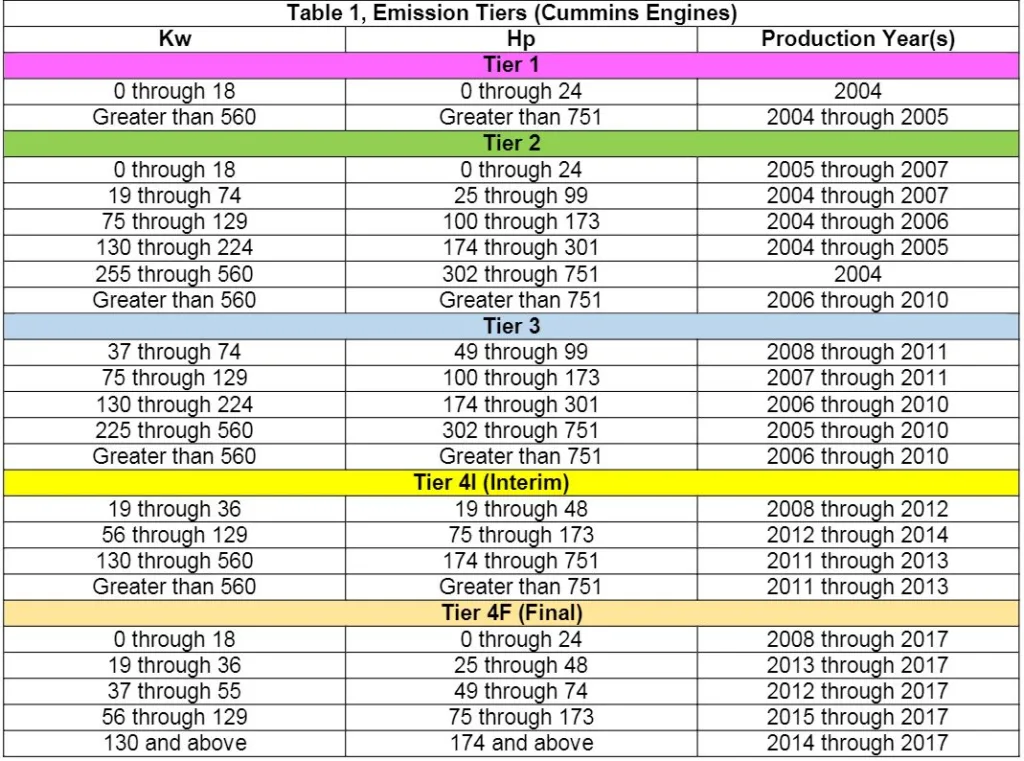This article provides valuable information on emissions from standby and emergency generators, focusing on different regulatory aspects related to environmental safety and compliance with the Environmental Protection Agency (EPA) standards. Here’s a breakdown of the key points:
What Are Emissions?
- Nitrogen Oxide (NOx): A colorless, non-toxic gas that occurs from combustion processes and natural events like lightning and forest fires.
- Hydrocarbons (HC): Organic chemical compounds containing carbon and hydrogen, ranging from methane to complex polymers.
- Carbon Monoxide (CO): A toxic, colorless, and odorless gas produced by incomplete combustion of fossil fuels.
- Particulate Matter (PM): A mix of solid and liquid particles suspended in the air.
Emissions History and Regulation
- Prior to July 2006, there were no federal emissions regulations for stationary diesel engines. Emission standards were locally managed based on the hours of operation.
- In January 2007, the EPA’s New Source Performance Standards (NSPS) harmonized regulations for stationary diesel engines with non-road regulations.
- The EPA categorizes engines into Mobile (e.g., farm equipment, trailerized generator sets) and Stationary (e.g., backup or distributed energy systems) applications.

Emission Tiers
- Emission tiers are certifications that an engine falls under, based on production date and size (in kW or HP). Manufacturers like Cummins, Caterpillar, and Detroit certify their engines with the EPA.
- Tier Classification helps determine the level of emissions and compliance with federal standards.
Emissions for Standby and Emergency Generators
- Reciprocating Internal Combustion Engines (RICE) are regulated due to their potential impact on air quality. These engines are used for stationary power generation.
- The EPA has a detailed approach to regulating RICE engines, with different standards depending on engine size, date of construction, and usage type (e.g., emergency standby power).
EPA Regulations and Emergency Generators
- Emergency Generators:
- Can operate unlimited hours during emergency situations.
- Can run up to 100 hours per year for non-emergency use, including maintenance, testing, and demand response.
- RICE Rule Exemptions:
- The RICE rule does not apply to certain non-road engines (e.g., mobile engines) or engines used for emergency situations in residential or commercial settings.
Key Regulations:
- NESHAP (National Emission Standard for Hazardous Air Pollutants) applies to RICE engines under specific operational conditions.
- NSPS (New Source Performance Standards) applies to both spark ignition and compression ignition engines.
- The RICE rule does not apply if the engine is used solely for emergency backup purposes, but the generator must still comply with manufacturer standards for maintenance and emissions.
Example Application:
- A Cummins 1500 kW generator, produced in 2008, used for backup power in case of outages, is exempt from the RICE rule since it falls under the emergency use category. However, it must adhere to maintenance and operational standards.
Final Compliance:
- For emergency use, state regulations must be checked, and the generator can operate unlimited hours during emergencies and up to 100 hours annually for non-emergency conditions.
- If the generator is used as a major power source, the RICE rule and Tier-based emissions requirements would apply.

To maintain compliance:
- Ensure regular maintenance of the engine and its components.
- Use ultra-low sulfur diesel (ULSD) or low sulfur fuels as required.
- Utilize exhaust after-treatment systems for better emissions control.
For more information, you can visit EPA-certified manufacturers’ websites or resources such as Cummins EPA to explore emissions control strategies in greater detail.